- Clone
- RPA-T4 (See other available formats)
- Regulatory Status
- RUO
- Workshop
- IV T114
- Other Names
- T4
- Isotype
- Mouse IgG1, κ
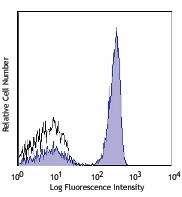
-

Human peripheral blood lymphocytes stained with RPA-T4 Alexa Fluor® 700 -

Confocal image of human metastatic lymph node sample acquired using the IBEX method of highly multiplexed antibody-based imaging: CD4 (blue) in Cycle 1 and EpCAM (red) in Cycle 3. Tissues were prepared using ~1% (vol/vol) formaldehyde and a detergent. Following fixation, samples are immersed in 30% (wt/vol) sucrose for cryoprotection. Images are courtesy of Drs. Andrea J. Radtke and Ronald N. Germain of the Center for Advanced Tissue Imaging (CAT-I) in the National Institute of Allergy and Infectious Diseases (NIAID, NIH).
| Cat # | Size | Price | Quantity Check Availability | ||
|---|---|---|---|---|---|
| 300526 | 100 µg | $268.00 | |||
CD4, also known as T4, is a 55 kD single-chain type I transmembrane glycoprotein expressed on most thymocytes, a subset of T cells, and monocytes/macrophages. CD4, a member of the Ig superfamily, recognizes antigens associated with MHC class II molecules, and participates in cell-cell interactions, thymic differentiation, and signal transduction. CD4 acts as a primary receptor for HIV, binding to HIV gp120. CD4 has also been shown to interact with IL-16.
Product Details
- Verified Reactivity
- Human
- Reported Reactivity
- Chimpanzee
- Antibody Type
- Monoclonal
- Host Species
- Mouse
- Formulation
- Phosphate-buffered solution, pH 7.2, containing 0.09% sodium azide.
- Preparation
- The antibody was purified by affinity chromatography and conjugated with Alexa Fluor® 700 under optimal conditions.
- Concentration
- 0.5 mg/ml
- Storage & Handling
- The CD4 antibody solution should be stored undiluted between 2°C and 8°C, and protected from prolonged exposure to light. Do not freeze.
- Application
-
FC - Quality tested
SB - Reported in the literature, not verified in house - Recommended Usage
-
Each lot of this antibody is quality control tested by immunofluorescent staining with flow cytometric analysis. The suggested use of this reagent is ≤1.0 µg per million cells in 100 µl volume. It is highly recommended that the reagent be titrated for optimal performance for each application.
* Alexa Fluor® 700 has a maximum emission of 719 nm when it is excited at 633 nm / 635 nm. Prior to using Alexa Fluor® 700 conjugate for flow cytometric analysis, please verify your flow cytometer's capability of exciting and detecting the fluorochrome.
Alexa Fluor® and Pacific Blue™ are trademarks of Life Technologies Corporation.
View full statement regarding label licenses - Excitation Laser
-
Red Laser (633 nm)
- Application Notes
-
The RPA-T4 antibody binds to the D1 domain of CD4 (CDR1 and CDR3 epitopes) and can block HIV gp120 binding and inhibit syncytia formation. Additional reported applications (for the relevant formats) include: immunohistochemistry of acetone-fixed frozen sections3,4,5, blocking of T cell activation1,2, and spatial biology (IBEX)10,11. This clone was tested in-house and does not work on formalin fixed paraffin-embedded (FFPE) tissue. The Ultra-LEAF™ purified antibody (Endotoxin < 0.01 EU/µg, Azide-Free, 0.2 µm filtered) is recommended for functional assays (Cat. No. 300569 - 300574).
- Additional Product Notes
-
Iterative Bleaching Extended multi-pleXity (IBEX) is a fluorescent imaging technique capable of highly-multiplexed spatial analysis. The method relies on cyclical bleaching of panels of fluorescent antibodies in order to image and analyze many markers over multiple cycles of staining, imaging, and, bleaching. It is a community-developed open-access method developed by the Center for Advanced Tissue Imaging (CAT-I) in the National Institute of Allergy and Infectious Diseases (NIAID, NIH).
-
Application References
(PubMed link indicates BioLegend citation) -
- Knapp W, et al. 1989. Leucocyte Typing IV. Oxford University Press. New York. (Activ)
- Moir S, et al. 1999. J. Virol. 73:7972. (Activ)
- Deng MC, et al. 1995. Circulation 91:1647. (IHC)
- Friedman T, et al. 1999. J. Immunol. 162:5256. (IHC)
- Mack CL, et al. 2004. Pediatr. Res. 56:79. (IHC)
- Lan RY, et al. 2006. Hepatology 43:729.
- Zenaro E, et al. 2009. J. Leukoc. Biol. 86:1393. (FC) PubMed
- Yoshino N, et al. 2000. Exp. Anim. (Tokyo) 49:97. (FC)
- Stoeckius M, et al. 2017. Nat. Methods. 14:865. (PG)
- Radtke AJ, et al. 2020. Proc Natl Acad Sci USA. 117:33455-33465. (SB) PubMed
- Radtke AJ, et al. 2022. Nat Protoc. 17:378-401. (SB) PubMed
- Product Citations
-
- RRID
-
AB_493743 (BioLegend Cat. No. 300526)
Antigen Details
- Structure
- Ig superfamily, type I transmembrane glycoprotein, 55 kD
- Distribution
-
T cell subset, majority of thymocytes, monocytes/macrophages
- Function
- MHC class II co-receptor, lymphocyte adhesion, thymic differentiation, HIV receptor
- Ligand/Receptor
- MHC class II molecules, HIV gp120, IL-16
- Cell Type
- Dendritic cells, Macrophages, Monocytes, T cells, Thymocytes, Tregs
- Biology Area
- Immunology
- Molecular Family
- CD Molecules
- Antigen References
-
1. Center D, et al. 1996. Immunol. Today 17:476.
2. Gaubin M, et al. 1996. Eur. J. Clin. Chem. Clin. Biochem. 34:723. - Gene ID
- 920 View all products for this Gene ID
- UniProt
- View information about CD4 on UniProt.org
Other Formats
View All CD4 Reagents Request Custom ConjugationCompare Data Across All Formats
This data display is provided for general comparisons between formats.
Your actual data may vary due to variations in samples, target cells, instruments and their settings, staining conditions, and other factors.
If you need assistance with selecting the best format contact our expert technical support team.
-
APC anti-human CD4
-
Biotin anti-human CD4
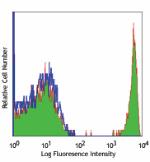
Human peripheral blood lymphocytes stained with biotinylated... -
FITC anti-human CD4
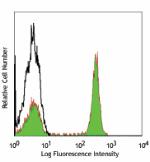
Human peripheral blood lymphocytes stained with RPA-T4 FITC 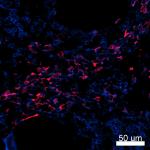
Confocal image of human lymph node sample acquired using the... -
PE anti-human CD4
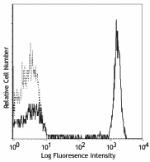
Human peripheral blood lymphocytes stained with RPA-T4 PE 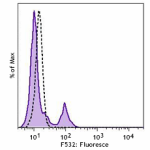
Human peripheral blood was stained with CD4 (clone RPA-T4) P... -
PE/Cyanine5 anti-human CD4
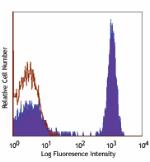
Human peripheral blood lymphocytes stained with RPA-T4 PE/Cy... -
PE/Cyanine7 anti-human CD4

Human peripheral blood lymphocytes stained with RPA-T4 PE/Cy... -
Purified anti-human CD4
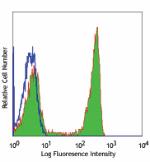
Human peripheral blood lymphocytes stained with purified RPA... -
APC/Cyanine7 anti-human CD4
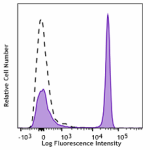
Human peripheral blood lymphocytes were stained with CD4 (cl... -
Alexa Fluor® 488 anti-human CD4

Human peripheral blood lymphocytes stained with RPA-T4 Alexa... 
Human peripheral blood mononuclear cells were fixed with 2% ... 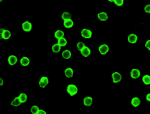
Human peripheral blood mononuclear cells were fixed with 1% ... -
Alexa Fluor® 647 anti-human CD4
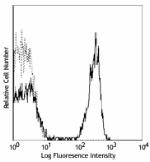
Human peripheral blood lymphocytes stained with RPA-T4 Alexa... 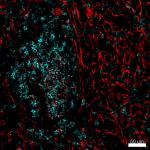
Confocal image of human spleen sample acquired using the IBE... 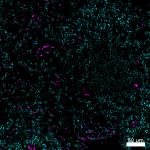
Confocal image of human lymph node sample acquired using the... -
Pacific Blue™ anti-human CD4

Human peripheral blood lymphocytes stained with RPA-T4 Pacif... -
Brilliant Violet 421™ anti-human CD4
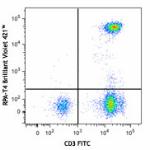
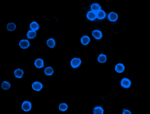
Human peripheral mononuclear cells were fixed with 1% Parafo... 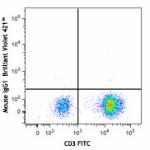
Human peripheral blood lymphocytes were stained with CD3 FIT... -
Alexa Fluor® 700 anti-human CD4
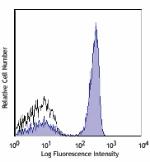
Human peripheral blood lymphocytes stained with RPA-T4 Alexa... 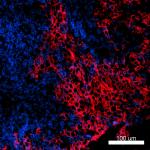
Confocal image of human metastatic lymph node sample acquire... -
PerCP anti-human CD4
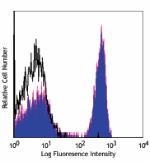
Human peripheral blood lymphocytes stained with RPA-T4 PerCP -
PerCP/Cyanine5.5 anti-human CD4
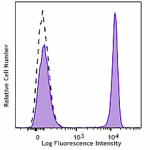
Human peripheral blood lymphocytes were stained with CD4 (cl... -
Brilliant Violet 570™ anti-human CD4
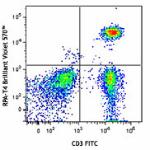
Human peripheral blood lymphocytes were stained with CD3 FIT... 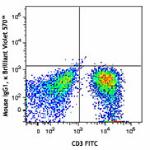
-
Brilliant Violet 650™ anti-human CD4
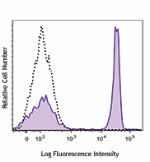
Human peripheral blood lymphocytes were stained with CD4 (cl... -
Purified anti-human CD4 (Maxpar® Ready)
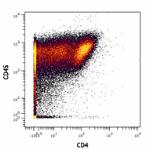
Human PBMCs stained with 154Sm-anti-CD45 (HI30) and 145Nd-an... -
Alexa Fluor® 594 anti-human CD4
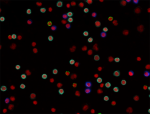
Human peripheral blood mononuclear cells were fixed with 2% ... 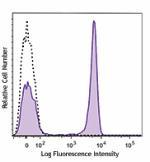
Human peripheral blood lymphocytes were stained with CD4 (cl... -
Brilliant Violet 510™ anti-human CD4
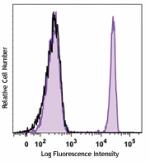
Human peripheral blood lymphocytes were stained with CD4 (cl... -
PE/Dazzle™ 594 anti-human CD4
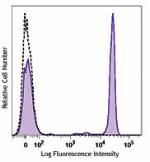
Human peripheral blood lymphocytes were stained with CD4 (cl... -
Brilliant Violet 785™ anti-human CD4
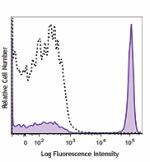
Human peripheral blood lymphocytes were stained with CD4 (cl... -
Brilliant Violet 605™ anti-human CD4
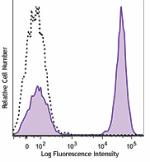
Human peripheral blood lymphocytes were stained with CD4 (cl... -
Brilliant Violet 711™ anti-human CD4
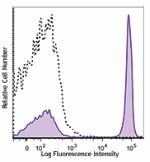
Human peripheral blood lymphocytes were stained with CD4 (cl... -
APC/Fire™ 750 anti-human CD4
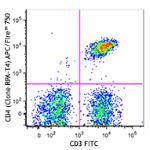
Human peripheral blood lymphocytes were stained with CD3 FIT... 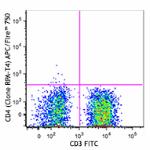
-
CD4 Fluorophore Sampler Kit
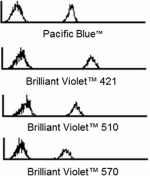
Veri-Cells™ PBMC were stained with anti-human CD4 (clone RPA... 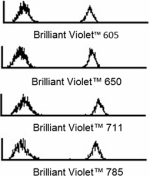
Veri-Cells™ PBMC were stained with anti-human CD4 (clone RPA... 
Veri-Cells™ PBMC were stained with anti-human CD4 (clone RPA... 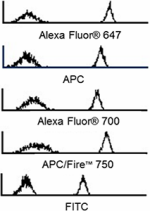
Veri-Cells™ PBMC were stained with anti-human CD4 (clone RPA... -
CD4 Fluorophore Sampler Kit with Veri-Cells™ PBMC

Veri-Cells™ PBMC were stained with anti-human CD4 (clone RPA... 
Veri-Cells™ PBMC were stained with anti-human CD4 (clone RPA... 
Veri-Cells™ PBMC were stained with anti-human CD4 (clone RPA... 
Veri-Cells™ PBMC were stained with anti-human CD4 (clone RPA... -
TotalSeq™-A0072 anti-human CD4
-
TotalSeq™-B0072 anti-human CD4
-
TotalSeq™-C0072 anti-human CD4
-
Ultra-LEAF™ Purified anti-human CD4
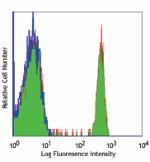
Human peripheral blood lymphocytes stained with LEAF™ purifi... -
TotalSeq™-D0072 anti-human CD4
